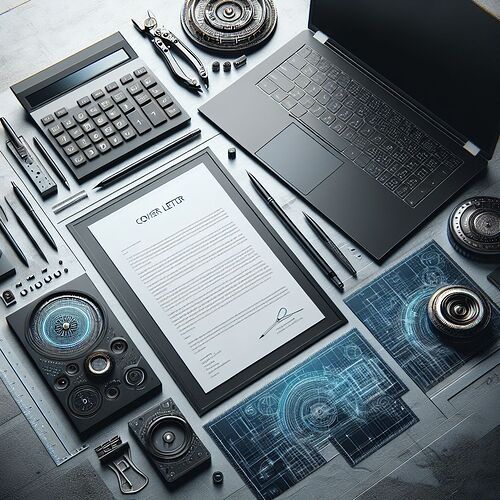Writing a cover letter can be a daunting task, especially for engineering professionals who may be more accustomed to technical documentation than persuasive writing. However, a well-crafted cover letter can be the key to landing your dream job. Here are some essential tips to help you create an effective cover letter:
1. Start with a Strong Opening
Your opening paragraph should grab the reader's attention and make them want to learn more about you. Mention the job you are applying for and where you found the listing. For example:
Dear Hiring Manager,
I am writing to express my interest in the Senior Mechanical Engineer position listed on your company's career page. With over 10 years of experience in mechanical design and project management, I am excited about the opportunity to contribute to your innovative team.
2. Tailor Your Cover Letter to the Job
Each cover letter should be customized to the specific job and company you are applying to. Highlight relevant skills and experiences that match the job description. For example:
In my previous role at XYZ Corp, I led a team of engineers in the development of a new HVAC system, which improved energy efficiency by 20%. I believe my expertise in sustainable design would be a valuable asset to your company.
3. Showcase Your Achievements
Use specific examples to demonstrate your accomplishments and how they relate to the job you're applying for. Quantify your achievements with numbers when possible. For example:
During my tenure at ABC Engineering, I successfully managed a $5 million project, delivering it on time and under budget. My ability to oversee complex projects and ensure quality outcomes aligns well with the requirements of the Project Engineer role at your company.
4. Highlight Your Technical Skills
Engineering roles often require specific technical skills. Make sure to mention any relevant software, tools, or methodologies you are proficient in. For example:
I am proficient in AutoCAD, SolidWorks, and MATLAB, and have extensive experience with finite element analysis (FEA) and computational fluid dynamics (CFD).
5. Demonstrate Your Soft Skills
In addition to technical skills, employers value soft skills such as communication, teamwork, and problem-solving. Provide examples of how you have demonstrated these skills in your previous roles. For example:
As a team leader, I have honed my ability to communicate complex technical concepts to non-engineering stakeholders, ensuring that project goals are understood and met. My collaborative approach has fostered strong team dynamics and successful project outcomes.
6. Keep It Concise
Your cover letter should be no longer than one page. Focus on the most relevant information and avoid repeating details from your resume. For example:
Enclosed is my resume, which provides additional details about my professional background. I look forward to the opportunity to discuss how my skills and experiences align with the needs of your team.
7. End with a Strong Closing
Conclude your cover letter with a call to action, expressing your enthusiasm for the role and your desire for an interview. For example:
Thank you for considering my application. I am eager to discuss how my background, skills, and certifications make me a perfect fit for this role. I look forward to the possibility of contributing to your esteemed company.
Sincerely,
John Doe
By following these tips, engineering professionals can create compelling cover letters that effectively showcase their qualifications and enthusiasm for the job. Remember to proofread your cover letter carefully to ensure it is free of errors and presents you in the best possible light.
Did I miss anything? Add your comments below!
